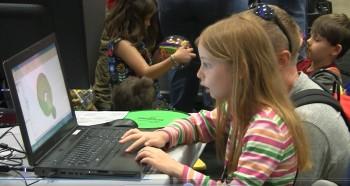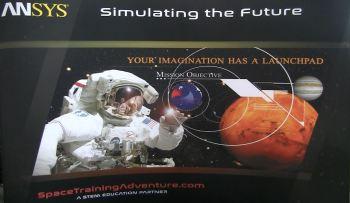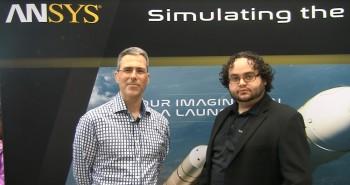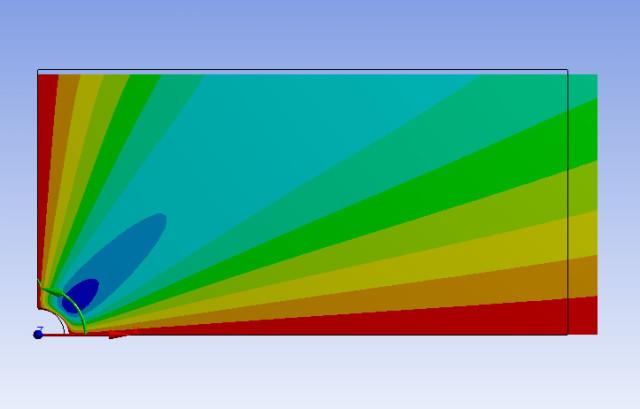 As time passes and innovation continues to ensue, more and more companies and educational institutions are working together to groom the next generation of engineers and design-savvy professionals. Both 3D design and printing have become increasingly recognized as a vital part of STEM (science, technology, engineering, math) education, and companies such as MakerBot and Sculpteo have been helping to make 3D printing technology more accessible to these schools. But as important as understanding this emerging technology may be, it’s arguably even more vital for students to learn about the nature of CAD and CAE softwares, which will enable them to use 3D printing technology to its full potential.
As time passes and innovation continues to ensue, more and more companies and educational institutions are working together to groom the next generation of engineers and design-savvy professionals. Both 3D design and printing have become increasingly recognized as a vital part of STEM (science, technology, engineering, math) education, and companies such as MakerBot and Sculpteo have been helping to make 3D printing technology more accessible to these schools. But as important as understanding this emerging technology may be, it’s arguably even more vital for students to learn about the nature of CAD and CAE softwares, which will enable them to use 3D printing technology to its full potential.
To help with this, the global leader in engineering software, ANSYS, has recently announced new academic software options for both SpaceClaim and ANSYS Aim. The STEM-driven initiative, which was announced by ANSYS’ academic program manager Paul Lethbridge at the USA Science and Engineering Festival (USASEF), will aim to provide educational editions of these two software programs for universities and K-12 classrooms. Along with the simplified versions of their popular software, the ANSYS initiative will also offer massive open online courses (MOOC) on CAE software, which will be operated by the prestigious Ithaca, New York-based Cornell University.
The focus of the STEM initiative is on SpaceClaim, their CAD modeler, as well as ANSYS Aim, which is their simulation platform that utilizes the CAD modeler on the front end. In just a matter of minutes, students were already to grasp the concept of their previously complex software, giving them an accurate feel for the work that engineers do. Getting these students accustomed to their simulation software, ANSYS hopes, will help them gain skills that will be extremely useful later on down the road. For instance, ANSYS is looking to provide high school students with a strong foundation of 3D concepts, which will better prepare them for a more in-depth look at the fundamentals of simulation and engineering principles once they move into higher education.
“They will understand 3D concepts, how things fit together and the effects of tolerancing,” said Lethbridge. “The SpaceClaim product plugs into 3D printing technology which is popular in middle and high schools. They are learning about maker spaces and additive manufacturing, but the software is the front end of that. It allows them to visualize, be creative and build things with no boundaries.”
Still, there are challenges beyond making their software readily available and accessible for the K-12 classrooms, particularly when it comes to providing the proper training and support alongside the software. To avoid the potential of having their software become “shelf-ware,” ANSYS is providing a number of supplementary resources to accompany their academic software, including online tutorials, customer portal, advanced training material, and technical support. In addition, ANSYS will also collaborate with professors to embed their simulation software into their courses, curriculum, and textbooks. Beyond the high school classrooms, ANSYS is planning to expand into middle schools and student competitions such as FIRST Robotics.
 Currently, ANSYS is sponsoring a new simulation MOOC taught by Cornell University, called “A Hands-on Introduction to Engineering Simulations,” which is free and open for anyone to enroll. They’ve also taken part in another MOOC called SimCafe. These courses will help teach how to use simulation with the mind of a professional engineer, utilizing simulation examples to help students better understand the software. Within these courses, the curriculum will explore common simulation issues, such as how a block deforms under a load or how fluid will flow through a pipe. You can learn more about the SimCafe MOOC and “A Hands-on Introduction to Engineering Simulations” on Cornell University’s website, which can help you grasp vital engineering knowledge, including finite element analysis and computational fluid dynamics. Discuss further in the ANSYS 3D Printed Concepts Courses forum over at 3DPB.com.
Currently, ANSYS is sponsoring a new simulation MOOC taught by Cornell University, called “A Hands-on Introduction to Engineering Simulations,” which is free and open for anyone to enroll. They’ve also taken part in another MOOC called SimCafe. These courses will help teach how to use simulation with the mind of a professional engineer, utilizing simulation examples to help students better understand the software. Within these courses, the curriculum will explore common simulation issues, such as how a block deforms under a load or how fluid will flow through a pipe. You can learn more about the SimCafe MOOC and “A Hands-on Introduction to Engineering Simulations” on Cornell University’s website, which can help you grasp vital engineering knowledge, including finite element analysis and computational fluid dynamics. Discuss further in the ANSYS 3D Printed Concepts Courses forum over at 3DPB.com.
Subscribe to Our Email Newsletter
Stay up-to-date on all the latest news from the 3D printing industry and receive information and offers from third party vendors.
Print Services
Upload your 3D Models and get them printed quickly and efficiently.
You May Also Like
3D Printing News Briefs, July 2, 2025: Copper Alloys, Defense Manufacturing, & More
We’re starting off with metals in today’s 3D Printing News Briefs, as Farsoon has unveiled a large-scale AM solution for copper alloys, and Meltio used its wire-laser metal solution to...
3DPOD 260: John Hart on VulcanForms, MIT, Desktop Metal and More
John Hart is a Professor at MIT; he´s also the director of the Laboratory for Manufacturing and Productivity as well as the director of the Center for Advanced Production Technologies....
3D Printing News Briefs, June 28, 2025: Defense Accelerator, Surgical Models, & More
In this weekend’s 3D Printing News Briefs, 3YOURMIND was selected to join an EU Defense Accelerator, and PTC has announced model-based definition (MBD) capabilities within Onshape. Finally, a study out...
EOS in India: AM’s Rising Star
EOS is doubling down on India. With a growing base of aerospace startups, new government policies, and a massive engineering workforce, India is quickly becoming one of the most important...



































